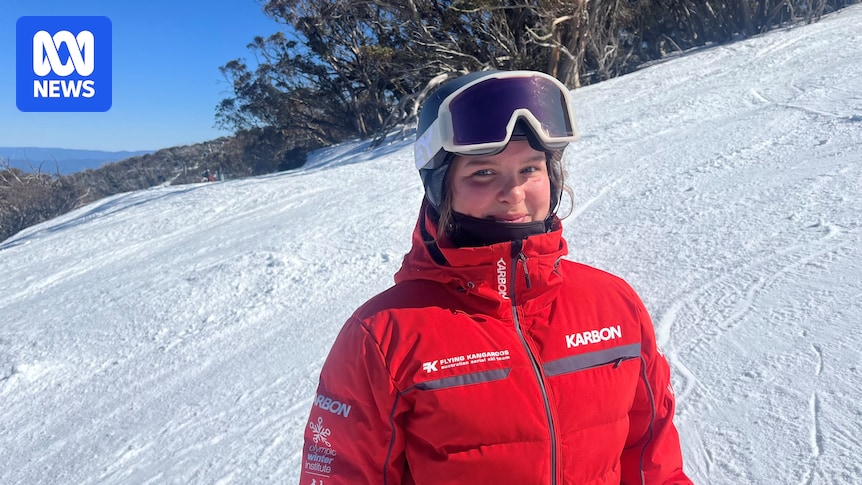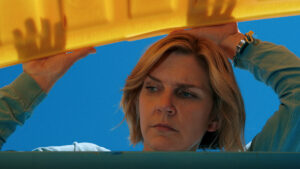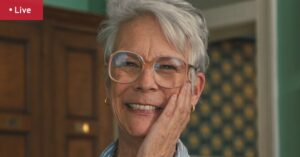
Chloe Saliaris, an 18-year-old former elite gymnast, is embarking on a challenging journey as she transitions into Australia’s renowned aerial skiing program. Despite her extensive gymnastics background, Saliaris faces the daunting task of learning to ski for the first time. “I’ve never skied before. I had seen the snow, but hadn’t really walked in it, so [it is a] very new environment for me,” Saliaris shared with ABC Sport.
Ski coach Danny Geiger, known for his expertise in converting gymnasts into aerial skiers, believes that the skills and mental toughness developed in gymnastics provide a strong foundation for aerial skiing. “You need hard work and commitment to the sport. Obviously, it is an extreme sport, so you need to be able to step into it and kind of let go of the fear and give it a good crack,” Geiger explained.
The Pathway from Gymnastics to Aerial Skiing
The transition from gymnastics to aerial skiing is a well-established pathway in Australia, pioneered by Kirstie Marshall, who clinched a world title in 1997. Her success laid the groundwork for the country’s current aerial skiing program, which has since flourished on the Olympic stage. Australia’s journey of triumph began in 2002 when Alisa Camplin secured a gold medal at the Salt Lake City Olympics. Lydia Lassila followed suit in Vancouver eight years later, with both athletes also earning bronze medals in subsequent games. David Morris added to the medal tally with a silver in 2014.
Australia’s achievements in aerial skiing are particularly remarkable given the absence of a snow jump facility within the country. Geiger attributes this success to the nation’s resilience and determination. “That Aussie grit. I think we see it across in all sports,” he said. “That kind of Aussie mentality of getting in there and giving it your all, that’s what kind of separates us a little bit.”
Preparing for Milano-Cortina 2026
As Australia looks forward to the 2026 Winter Olympics in Milano-Cortina, the aerial skiing team is poised to lead the charge. Following the conclusion of the last Northern Hemisphere winter, four Australian women ranked within the world’s top 10: Airleigh Frigo in 10th place, Abbey Willcox fifth, Danielle Scott third, and Laura Peel at the pinnacle as world number one. These athletes even achieved a remarkable sweep from first to fourth at the Deer Valley World Cup event in the United States.
In addition to their tenacity, Australia’s elite athletes now benefit from the state-of-the-art Geoff Henke Olympic Winter Training Centre in Brisbane, which opened in 2020. This facility features a multi-million-dollar water jump that allows aerial skiers to train year-round by jumping into an Olympic-sized swimming pool, with ramps designed to mimic the sensation of sliding down a snow-covered mountain. This represents a significant upgrade from the previous training site, a dam outside Lilydale in Melbourne’s outer north-east, where past Olympic champions honed their skills.
Looking Ahead: Challenges and Expectations
As the upcoming Northern Hemisphere winter season approaches, Laura Peel carries the weight of expectations as she aims to qualify for her fourth Olympics and secure a podium finish for the first time. Despite the pressure, Peel remains focused on maintaining her composure. “The Olympics is one day, it’s one jump for us, it can be over in three seconds, so I think it’s just about staying cool and trusting yourself in the moment, and, you know, we do all the tough physical work, we’ve got to do the mental work as well to cope with that moment,” she remarked.
The Milano Cortina Winter Olympics Opening Ceremony is scheduled for February 6, 2026. As Australia prepares to field what could be its strongest-ever Winter Olympic team, the aerial skiing program stands as a testament to the nation’s enduring spirit and commitment to excellence.





